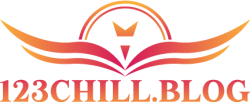Sales forecasting stands at the intersection of art and science. It helps businesses anticipate their future revenue, adjust their strategies, optimize their resources, and remain competitive. From startups to multinationals, a robust sales forecasting system is indispensable. It’s the lens through which leaders see their future and, in doing so, shape it.
1. Why is Sales Forecasting Important?
At its core, sales forecasting is about prediction. Predicting the number of sales a company will make in a specified period allows for several benefits:
- Resource Allocation: If a company anticipates a surge in sales, it can increase its inventory, hire temporary staff, or upscale its logistics. Conversely, if a slump is expected, resources can be conserved.
- Strategy Optimization: When sales projections look bleak, companies can implement aggressive marketing campaigns or offer promotions. If sales are expected to boom, companies might consider expansion or increasing production.
- Investor Relations: Potential investors or stakeholders will always be keen to understand a business’s growth trajectory. An accurate sales forecast can bolster a company’s credibility.
2. Traditional vs. Modern Forecasting Methods
Historically, sales forecasting depended heavily on intuition and experience. While this ‘gut feeling’ approach might have worked in some instances, it’s far from reliable. Modern forecasting techniques, on the other hand, leverage data, analytics, and technological tools. Here’s a closer look:
- Historical Forecasting: This method is straightforward – it involves looking at past sales data and projecting it into the future. If a business sold 100 units last December, it might predict the sale of 110 units this coming December, accounting for a 10% growth rate. It’s simple but doesn’t account for market shifts, competition, or external events. The historical data is foundational but should be used judiciously. Here’s a deeper dive into how historical data can be used for forecasting.
- Intuitive Forecasting: This method relies on the experience and intuition of sales professionals. While it might seem outdated, the value of human judgment should never be discounted. Seasoned sales professionals can offer insights that raw data might overlook. However, this method is subjective and can be prone to biases.
- Regression Analysis: A more data-driven method, regression analysis examines the relationship between different variables to predict sales. For instance, a company might study the correlation between its advertising spend and sales figures. Using regression models, the company can predict how an increase or decrease in advertising might affect future sales.
- Time Series Analysis: Time series forecasting breaks down sales data into components like seasonality, trend, and residual. This breakdown helps businesses predict sales more accurately, especially when there are seasonal fluctuations.
- Moving Averages: This method involves taking the average of a set number of past periods to predict the next one. For example, to forecast sales for June, you might average sales from January to May. While it’s an improvement over simple historical forecasting, moving averages can lag in rapidly changing environments.
3. Technological Innovations in Sales Forecasting
Today’s businesses operate in an age of unprecedented data availability. This data, when harnessed with powerful analytical tools, can revolutionize sales forecasting.
- Artificial Intelligence and Machine Learning: These technologies can process vast amounts of data at high speeds, uncovering patterns humans might miss. AI-driven forecasting tools can adjust predictions in real-time, considering a plethora of variables.
- Predictive Analytics: As the name suggests, this approach leverages statistical algorithms and machine learning techniques to identify the likelihood of future outcomes based on historical data. The difference between this and traditional methods is the speed and accuracy with which predictions are made. More on the power of predictive analytics here.
4. The Role of the Sales Pipeline
Mentioning the sales pipeline is crucial when discussing forecasting methods. It represents the journey of potential customers from lead generation to sales conversion. By analyzing where prospects are in the pipeline, businesses can predict which leads are likely to convert into sales in a given timeframe. This method can be especially accurate in B2B settings where sales cycles are longer and stages are clearly defined.
5. Challenges in Sales Forecasting
No matter the method or technology used, sales forecasting will never be 100% accurate. Several challenges persist:
- External Factors: Economic downturns, geopolitical events, or unforeseen crises (like a global pandemic) can dramatically affect sales.
- Data Quality: A forecast is only as good as the data it’s based on. Inaccurate or outdated data can lead to erroneous predictions.
- Rapid Market Changes: Especially in tech-driven sectors, market dynamics can change rapidly. A disruptor can emerge, drastically affecting sales projections.
Conclusion
Sales forecasting is a blend of science, art, and a touch of intuition. It’s a dynamic field, with evolving methodologies and tools. Whether you’re relying shayariway on historical data, intuitive insights, or cutting-edge AI tools, the goal remains the same: to peer into the future and make informed decisions today. As businesses continue to grow in complexity, the importance and sophistication of sales forecasting methods will undoubtedly rise.

